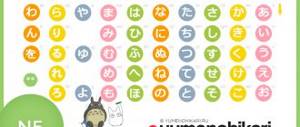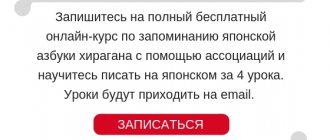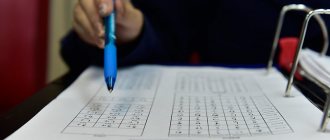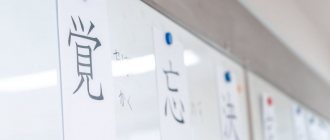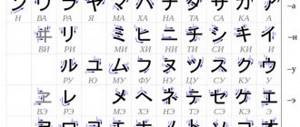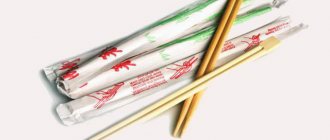こんにちは。(KONNICHIWA)!
Learning the Japanese language certainly begins with becoming familiar with the hiragana and katakana syllabaries. For a better presentation, a hiragana table will be placed below, indicating the sequence of writing strokes. Having studied the alphabet, you can move on, so you need to be patient and take the first step. In fact, you can learn the entire alphabet in a day, but in the future you must immediately use it practically, namely, read words written in hiragana and write, otherwise the studied symbols will very quickly disappear from memory.
Everyone has their own learning method, I taught it as follows:
- I purchased an opaque block of writing paper, size 9 x 9, on one side I wrote a symbol from the Hiragana alphabet, on the reverse side it was read in Cyrillic (Ps, having started attending Japanese language courses, I want to clarify that the Hiragana symbol must not only be written down, but also marked arrows in the sequence of drawing, this is important and this sequence must be followed)
- studied the characters horizontally, that is, first the line on あ(a) い(i) う(u) え(e) お(o), then か(ka) き(ki) く(ku) け(ke) こ( ko) and so on (Also from course practice: start each lesson with a quick sequential pronunciation of all the lines of the alphabet available in the hiragana table, for example あいう えお, then かきくけこ and then to the bottom lines. This is also important, except Although this is another way to memorize hiragana, this exercise will allow you to easily pronounce Japanese words in the future)
- I learned the signs, writing each one on paper, until I remembered how to write the entire line
- After I remembered the writing of the characters horizontally, I additionally checked them vertically, that is, あ(a) か(ka) さ(sa) た(ta) な(na) は(ha) ま(ma) や(ya) ら(ra)わ(wa)
- Well, the last stage when we can say with confidence that the hiragana characters have been learned is when you can write or say how to pronounce the sign scattered, and not in order
You use the symbols that you have written on the cards to reinforce the material you have studied: take a card, read the pronunciation in Cyrillic, write down on paper what the sign looks like - check, when the material has been learned, check in the reverse order from hiragana to Cyrillic.
Nowadays there are many programs for learning the language, by pressing buttons you test your knowledge, but in my opinion, writing down symbols is the most correct approach to learning Hiragana, especially since it is necessary to learn to write.
There are two generally accepted systems of language learning - the Polivanov system, developed back in 1930, and the Hepburn system (developed much earlier than Polivanov, then revised). Whatever system you follow, when starting to study Hiragana and the Japanese language in general, you need to know what the Japanese themselves, who teach the language to foreigners, write about it:
- There is no "sh" sound in Japanese
- there is no difference between the sound "b" and "v"
- Japanese ra is very similar to la, so there is also no difference between these two sounds la/ra, li/ri, lu/ru, le/re, lo/ro. To correctly pronounce this sound in Japanese, the tongue must be in exactly the same position where the Russian “r” is located, but as soon as the sound begins, you should not continue to growl it, but immediately move on to the next vowel (this is a simplified version of the explanation)
- the sound “u” is not open, but slotted (the mouth almost does not open) and is more similar to the sound “wa/ya”
As for the symbol し (si in Polivanov’s system and shi in Hepburn’s system, in reality it is an average between these two sounds and is very close to the sound “cabbage soup”), but for some reason it is generally accepted that when pronouncing the sound, whatever you like is used, but when writing, you must use the Polivanov system adopted in Russia. When studying words, I try to pronounce (memorize) them in accordance with Japanese pronunciation, but when writing in articles on the site, unfortunately I get confused by different spellings.
- There are 46 basic combinations in the Hiragana alphabet, 5 of which are vowels あ い う え お and 104 basic combinations
- When adding the dakuten (nigori) sign -゛, a voiceless consonant is voiced, for example か (ka) becomes - が (ga), さ (sa) - ざ (za)
- In the X series, when adding the handakuten sign ゜, the sound “x” is replaced by “p”, for example は(ha) - ぱ(pa), but when adding dakuten - ば(ba)
- Also often found is the reduced sign っ (tsu) (the usual tsu is つ), called sokuon, it doubles the consonant, in the next one after it there is a sea, for example いって (itte) - say
- The advantage of hiragana is that the word is both read and written, there is no replacement of “o” with “a”, “e” with “i” and so on, so it is very important to pronounce the word correctly, otherwise many misunderstandings may arise
What is hiragana
Studying the Japanese language has recently become popular; many manuals, materials, techniques, paid and free courses, and websites have appeared. Almost all textbooks have a common feature - one of the first topics will be “Learning the Japanese Hiragana alphabet.”
Memorizing the syllabary alphabet is an important step in learning Japanese. A beginner who picks up a table thinks with horror: “How can I learn hiragana in a week? I won’t remember everything in a month!”
What is hiragana? This is a syllabic alphabet, which means that each symbol represents not a sound, but a syllable. Forty-six hiragana characters are used to write conjunctions, endings, and postfixes. And young children first learn to write in Hiragana, and only then begin to learn Kanji.
You can start learning Hiragana right away. Methods and tools can be mixed and matched. For example, study at home from a textbook, writing down symbols in a notebook, and in your free time outside the home, use a mobile phone application (in transport, in line, during recess) or check what you have learned using a computer program. The main thing is to practice every day, and then you can easily learn hiragana even in less than a week!
Recognition problems
The word "Nippon" (Japan) written in hiragana, katakana and kanji
The Japanese language uses three main writing systems, and hiragana is the most important and all-encompassing. Children learn the 46 hiragana characters in preschool, before they even begin to memorize katakana and kanji. The alphabet is purely phonetic, that is, each sign always has the same basic pronunciation, so they can be used immediately, without memorizing phonetic rules, which is a problem, for example, in English, Russian or French, where the way to read the signs depends on a number of factors Each sign denotes a short syllable ending in almost all cases with one of five vowels - a, i, u, e, o. Only the n sign (ん) represents a single consonant.
The small icons above the hieroglyphs are called furigana or rubi, and show the reading of the hieroglyphic words. Nihongo o benkyo shite imas (I am studying Japanese) is written here.
Those learning Japanese as a foreign language can initially make do with writing Japanese words in Latin or Cyrillic transliteration, but it is worth starting to study Hiragana early - there are only twice as many letters there as in European alphabets. Hiragana lays the foundation for further reading and understanding of texts, and is used to record the reading of kanji next to them. Understanding hiragana is also important for the first acquaintance with the Japanese-speaking environment.
Mnemonic tricks help you remember the Japanese alphabet, but some characters are still easier to remember than others. For example, English-speaking students remember し (si) through the phrase “she has long hair,” while others need to spend more time and use their imagination. Some of them resemble Latin or Cyrillic characters - ん resembles a cursive Latin “n”, the signs や (я) and ゆ (у) are vaguely similar to their Cyrillic counterparts, especially the latter. た looks a bit like the letter combination “ta”, and い (i) looks like a pair of “i” without dots.
Mnemonics for remembering hiragana characters
My favorite mnemonic is む (mu), which looks like a cow - its head is on the left, its tail is on the right, and it moos: "Moo!" The ふ (fu) sign looks similar to Mount Fuji. It’s easy to find other mnemonic pictures for hirgana on the Internet. When memorizing, visual similarities can cause confusion, as in the cases of さ (sa) and き (ki), れ (re) and わ (wa), は (ha) and ほ (ho) - in such cases, attention should be paid to the differences in the number of features and their shape.
The old fashioned way
The traditional method of learning the syllabary alphabet is to do exercises according to the textbook. We pick up a book or notebook and patiently write out each squiggle, following the rules of writing and saying it to ourselves. In a row, like letters in first grade. After every five signs we do oral and written exercises. How to learn hiragana in a week this way? Plan your time and stay on schedule.
Frankly speaking, doing exercises, especially written ones, will take a lot of time. But if you are learning a language for your own pleasure, then you can devote more time to your studies and learn how to write characters perfectly.
The advantages of this method: visual and mechanical memory work simultaneously, memorization occurs quite quickly. And most importantly, the knowledge acquired in this way lasts literally for years. Even if you stop learning a language for a while, when you start again, you will remember everything very quickly.
Instructions for self-studying Japanese
She will explain in detail how to learn Japanese from scratch at home. All that remains is to supplement it with materials that interest you, select the correct teaching aids and provide regular classes. Remember that learning this language will not happen quickly - on average, even the most talented students take at least 3,000 hours to study to the JLPT N1 level. If you plan to study at home without tutors, feel free to add another 1,500 - 2,000 hours to this time. Do difficulties not scare you? Then proceed to the instructions.
Learn Japanese writing
In Japanese writing, the following are used simultaneously:
- Kanji are characters borrowed from the Chinese and are used to write the stems of words. These are 2,136 standard hieroglyphs and about 500 more “informal” ones.
- Hiragana is a 46-character syllabary used to write particles, unchangeable parts of a word, and some entire words.
- Katakana is a 46-character syllabary used to write borrowed words.
They need to be studied. On average, learning hiragana and katakana takes no more than 12 hours, which means a full week of self-education will be quite enough. With kanji it is much more difficult - hieroglyphs must be learned gradually. Practice shows that to understand half of all kanji in a text, you need to learn 80 kyoiku kanji and 170 of the most popular kanji. If you want to understand more than 90% of what is written, then you need to learn about 1,500 of the most popular kanji - this will take at least 2-3 years.
Start writing in Japanese
At the same time, try not so much to write with a pen on paper as to type. To do this, enable the Japanese layout on your computer and install a special keyboard on your phone (for example, Google-developed “Gboard” or its equivalent). Please note: some extensions allow you to write Japanese words in English letters and quickly convert them into hiragana and kanji later - this option will be especially useful for beginners. Don't forget to also install Japanese fonts in your browser and mobile phone.
Start learning Japanese grammar
In the first stages, the basics will be more than enough. Take any grammar textbook (we will recommend the most popular ones in the list of useful resources) and study it. In the initial stages, it is better to use manuals intended for beginners. The knowledge gained will help you understand the logic of the language and begin to correctly structure words in sentences.
Select dictionaries
They will be vital to you throughout your training. Choose the dictionary you like yourself or use the most popular ones. Please note: if you know English, then it makes sense to use not only Russian-Japanese, but also Japanese-English dictionaries - this will allow you to improve in two languages at the same time. We also recommend installing the Rikaichan browser extension, with which you can quickly translate any word in italics.
Start reading books and watching movies in Japanese
It’s not so important what exactly you watch or read - it could be anime, manga, books, films, popular TV shows or news items. It is better to select Russian or English subtitles for any video - this will help you simultaneously remember the meaning, pronunciation of words and their usual location in a sentence. Beginners are recommended to watch at least 150-200 hours of video in their first year of study.
Expand your vocabulary
Engage in replenishing your vocabulary. Use thematic collections of words, textbooks and mobile applications for this. Write down unfamiliar words when reading the texts of books, articles and songs, try to remember their meaning. First, study the words that Japanese people use most often in speech, and then move on to words and expressions from topics that match your interests.
Communicate with native speakers
This will help you correct your pronunciation and understand the peculiarities of the placement of accents in sentences. Conversations with Japanese will also introduce you to slang words often used in informal communication. You can find native speakers on social networks, popular apps and educational forums.
Cards
This method perfectly complements the previous one. Cut out 46 cards from cardboard, write a hiragana character on each (you can also write katakana on the back). Shuffle all the cards, pull out one at a time and call them. A kind of test, which also promotes memorization. You can study almost from the very beginning of training - just remove the cards of signs that you have not studied yet. Or you can improve your knowledge of symbols that are difficult to remember - remove the cards that you know best and practice with the most difficult ones.
Programs, games and mobile applications
You can do without drawing signs and take advantage of the benefits of civilization, namely programs for learning hiragana. How to learn hiragana in a week using the program? Download one of them and install it on your computer. It can be:
- “Canonization”, which combines several modes;
- a script for Word that replaces Russian syllables with hiragana;
- a game of kana, in which you need to find the meaning of signs;
- Easy Kana program, which operates on the principle of cards and allows you to both learn new and repeat signs.
Online trainers can be found on websites for Japanese learners.
Don't forget about the computing power in your own pocket. There are a great many mobile applications that help you learn hiragana. These are all kinds of educational tables, cards, games. One “but” - all programs are in English, but it’s not difficult to understand the most popular ones. These are JA Sensei, Kana, Obenkyo, Kana Mind and many others, most of them are free.
The advantage of studying using programs is speed. You won’t ask how to learn hiragana in a week, the signs themselves will be remembered after a couple of days of use, learning is easy and enjoyable. But they are also forgotten in a moment. In addition, problems with reading books and writing may occur. It’s better to look at the textbook to do the exercises at least orally. A huge advantage of mobile applications is that you can study anywhere, for example, on the subway or at a boring lecture.
Why learn Japanese? 5 reasons to get motivated
Japan is a truly unique country with the highest standard of living and developed economy. It is really difficult to immigrate here, regardless of the purpose of immigration. A prerequisite for obtaining a residence permit is knowledge of the Japanese language. It is difficult to learn, but quite possible.
Let us note at least 5 reasons to start learning Japanese right now:
- The opportunity to immigrate to a country with one of the highest standards of living. Japan ranks 17th in the world in terms of the Human Development Index and 3rd in terms of nominal GDP; the average life expectancy here in 2009 was 82 years.
- Potential to study at one of the best universities on the planet. Tokyo and Kyoto universities are among the best in the world. Thousands of students come to Japan every year, most of them want to connect their lives with robotics and biotechnology.
- An opportunity to immerse yourself in a unique centuries-old culture. The cultural traditions of Japan are at least 3 thousand years old. Learning a language allows you to immerse yourself in it and discover the wonderful world of the Land of the Rising Sun.
- Obvious preferences in employment for relevant vacancies. You will receive a significant advantage when employing companies that do or plan to do business with partners from Japan.
- Personal and intellectual development by 10 points. Studying a language so far from the Cyrillic alphabet will give a powerful impetus to your intellectual development, and its contact with a centuries-old cultural layer will help broaden your horizons.
Interestingly, the Japanese language most often attracts connoisseurs of anime, manga, martial arts and local pop culture. However, over time, a superficial love for Japan develops into something more. In practice, students are much less likely to lose interest in learning Japanese than any European language.
